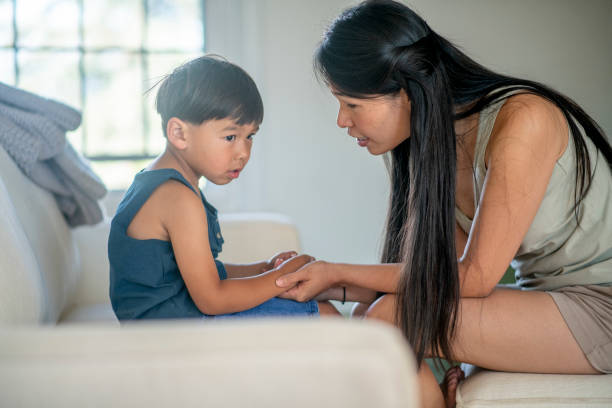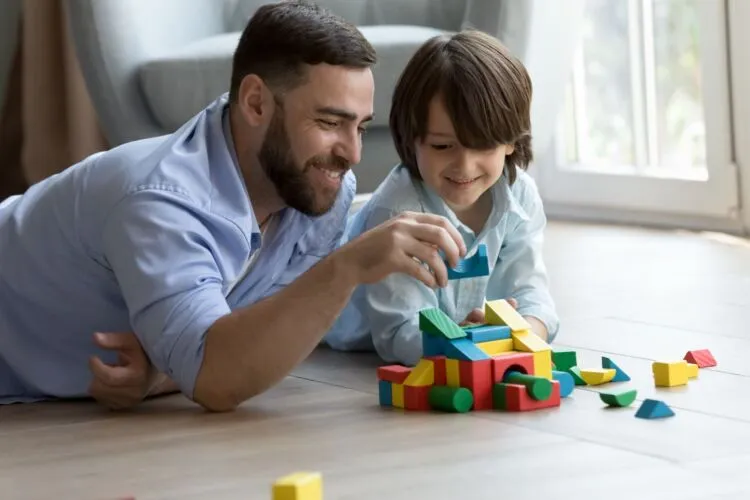
One of the greatest gifts you can offer your child is not toys, grades, or achievements—but confidence. A secure sense of self will guide your child in handling challenges, forming relationships, and believing they can succeed. But what happens when a child doesn’t seem to believe in themselves? In this guide, we’ll explore practical, science-based ways to boost child self confidence—starting at home.
What Does Confidence Look Like in Children?
Self-confidence in children doesn’t mean arrogance or perfection. It means:
-
Trying new things without fear of failure
-
Believing their effort matters
-
Feeling worthy, even when they make mistakes
A child with healthy confidence may still have doubts, but they face problems with the belief that “I can figure this out.”
By contrast, a child with low self-esteem may hesitate to speak in groups, struggle to make decisions, or give up easily.
Why Do Some Children Struggle With Confidence?
Even in loving homes, many children quietly grow up feeling unsure of themselves. Causes may include:
-
Overprotection: When children aren’t allowed to make decisions, they doubt their abilities.
-
Perfectionism: Constantly being corrected or expected to excel sends the message: “I’m not enough.”
-
Comparison: Social media and peer pressure amplify feelings of inferiority.
-
Criticism: Harsh feedback, especially from caregivers, becomes the child’s inner voice.
If your child says, “I can’t,” “I’m not good at anything,” or avoids trying, these may be early warning signs of self-doubt.
How to Boost Child Self Confidence at Home
There’s no one-size-fits-all solution, but daily habits matter more than grand gestures. Here are concrete, doable actions you can take to boost child self confidence naturally and sustainably.
1. Allow Age-Appropriate Independence
Confidence is built through doing, not watching. Let your child dress themselves, pack their backpack, or pour their own juice. Even if it takes longer, these moments say: “I trust you.”
🔗 CDC Guidelines on Developmental Milestones offer great insights into age-appropriate skills.
2. Praise Effort—Not Outcome
Rather than saying, “You’re so smart,” try, “You really focused on that puzzle!” This type of process praise helps children understand that effort, not perfection, is the key to success.
Studies from the American Psychological Association support this idea: children praised for effort show more motivation and resilience later in life.
3. Let Them Make Mistakes
It’s tempting to jump in and fix things. But mistakes teach kids to problem-solve and bounce back. When they see that you’re not upset, they learn that failure is not the end of the world.
Say things like:
-
“What can you do differently next time?”
-
“You’re learning—mistakes are part of that!”
4. Create a Safe Emotional Environment
Children need to know they are loved regardless of what they achieve. Reinforce this with:
-
“I love you even when you’re upset.”
-
“You’re more than your test scores.”
-
“It’s okay to feel nervous—we all do sometimes.”
Children thrive when they feel emotionally safe to try and fail without judgment.
5. Set Realistic Expectations
Expecting too much can make children feel inadequate. Expecting too little can stunt growth. Strike a balance:
-
Use phrases like “Let’s try together” or “It’s okay to do it your way.”
-
Support effort over speed.
Encouragement fuels action. Unrealistic standards fuel shame.
6. Watch Your Own Inner Voice
Your child learns not only from what you say to them—but from what you say around them.
Do you say things like:
-
“I’m terrible at math.”
-
“I’m so stupid for forgetting that.”
Model self-kindness. Say instead: “I’m still learning,” or “That was a mistake, but I’ll fix it.” You’re teaching them how to talk to themselves.
[H2] How to Boost Child Self Confidence in Social Settings
Confidence doesn’t exist in a vacuum—it grows in relationships.
Encourage Play With Other Children
Playing with peers helps children navigate boundaries, express themselves, and experience collaboration. Don’t over-direct their play; let them lead.
If your child is shy, start with:
-
Small groups
-
One-on-one playdates
-
Settings where your child feels comfortable (home, familiar parks)
Practice Social Scripts
If your child struggles socially, practice simple phrases:
-
“Can I play with you?”
-
“Let’s take turns.”
-
“That wasn’t nice—please stop.”
These scripts build the courage to speak up and connect.
Volunteer Together
Acts of service show children they can make a difference. Helping someone else is an empowering experience that teaches compassion and capability.
You can:
-
Donate old toys together
-
Volunteer at an animal shelter
-
Pick up trash at a park
Realistic Tips for Different Age Groups
Toddlers (1–3): Let them try! Don’t redo what they’ve done unless it’s unsafe. Cheer them on: “You did it!”
Preschoolers (4–6): Give small chores and praise their initiative: “You helped me set the table—thank you!”
Elementary Age (7–11): Let them solve social or school problems with minimal interference. Be a coach, not a fixer.
Tweens (12+): Talk openly about insecurity, pressure, and social media. Listen more than you speak.
When to Worry About Low Confidence
A temporary dip in confidence is normal. But it may be time to seek help if:
-
Your child avoids all challenges
-
Constantly puts themselves down
-
Displays anxiety or sleep problems
-
Has trouble with peers or teachers
-
Expresses hopelessness
A school counselor or child psychologist can help assess deeper issues and guide interventions.
Outbound Resources That Can Help
-
Child Mind Institute: Offers practical parenting advice and mental health resources
-
APA’s Resilience Toolkit: Psychological strategies for resilience in children
-
Understood.org: Great for parents of kids with learning differences or confidence issues
Summary: Confidence Is Built, Not Born
You don’t need to be perfect to raise a confident child. You just need to be present, consistent, and emotionally safe. To boost child self confidence, remember:
-
Encourage effort, not perfection
-
Let them try, fail, and try again
-
Offer love that isn’t performance-based
-
Model what self-kindness looks like
-
Trust that progress takes time
Confidence isn’t taught in one conversation—it’s woven into the everyday moments that show your child they are capable and worthy.
FAQ – How to Boost your Child Self Confidence
Q1: How can I tell if my child has low self-confidence?
Q2: Does overpraising build or harm confidence?
Q3: How do I support a shy child in social settings?
Q4: What if my child refuses to try anything new?
Q5: Can therapy help boost child self confidence?
Q6: Is it okay to let my child struggle with tasks?






